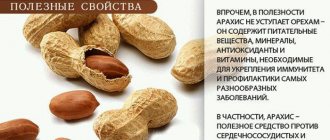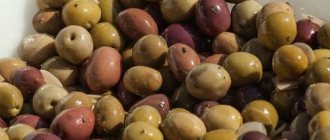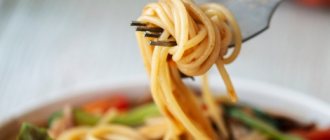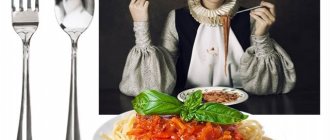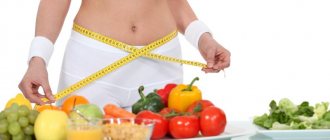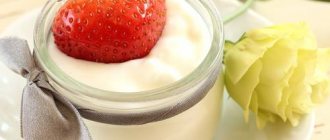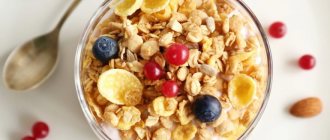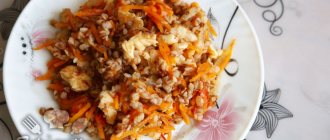One of the common questions people ask is what to eat peanut butter with. Most Russians learned about the existence of peanut butter from American movies, where every family made sandwiches for breakfast. Americans love this product and celebrate National Peanut Butter Day on January 24th.
As for Russia, this product became known about its healthy and tasty qualities about ten years ago. The product contains peanuts, water and salt, which scares many people about the calorie content. However, there is a substance that contains neither sugar nor flavorings.
Peanut butter taste
Peanut butter, whatever one may say, is not a very well-known product in our country, although in recent years everything has changed and there are more and more lovers of this food. And it often happens that, having tried peanut butter for the first time, a person grimaces and says: “this peanut butter of yours... is it delicious?”
After the first acquaintance, some still tried the pasta, while others remain its opponents. Yes, of course, there are no comrades in taste and color. At the same time, in fairness, it is worth noting that peanut butter is a spread on bread, so it will not be very tasty in a spoon: its consistency is usually dense, the main part consists of finely ground nuts, they do not dissolve in the mouth and create a feeling of something rough and heavy. The only thing I personally can compare peanut butter to is 99% dark chocolate. Here it is just as rough, dense, almost unsweetened. So the question is, is peanut butter tasty or not? – it’s difficult to answer unequivocally. Of course, it is tasty, but not everyone will like its taste. Just like not everyone likes honey or chocolate.
What is peanut butter?
If you are interested in how peanut butter is made and what it is, I can tell you that a small amount of vegetable oil is added to finely ground roasted peanuts (to create a paste-like consistency), as well as a little salt and sugar. Therefore, peanuts themselves make up up to 99% of the total amount of paste and its main properties are determined almost exclusively by them.
What is peanut butter: history of appearance, how it is made
The birthplace of peanut butter is the United States of America. It was there at the end of the 19th century that it was made for the first time. The peanut butter was originally made as a source of protein for people who had lost their teeth. Its recipe was significantly different from the modern one, so the product had a different taste.
Peanut butter production reached a new level with the advent of the nut grinding machine. And in 1932, the American manufacturer Peter Pen Peanut Butter Company began mass production of the superfood.
The industrial technology for making paste is quite simple:
- The process begins with peeling and pre-roasting the peanut kernels.
- Using special fans, the mass is cooled to room temperature.
- The bitter core is removed from the nuts, after which they are ground using rubber bands.
- The nut mass is sent to a crushing machine, where it is turned into paste.
- Sugar, salt and vegetable oil are added to it.
- The finished peanut butter is cooled and packaged in jars.
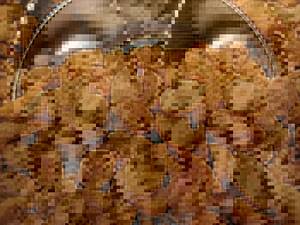
Peanut butter on a diet
Peanut butter varies in composition (and taste). There are some with chocolate fillings, honey and dried fruits, and there is an almost dietary version - even without sugar. Someone will be surprised: how can this be called a dietary product, half of which is fat? But it is possible. Keeping in mind that peanut butter fat is vegetable, consisting almost entirely of unsaturated fatty acids, which help speed up fat metabolism, reduce the amount of bad cholesterol and bring the body many more pleasant and useful things. So it’s not surprising: peanut butter is quite acceptable on a diet and is in great demand by many. However, it is necessary to clarify what diet is meant. If the diet, for some reason, requires that you reduce the amount of fat in your diet as much as possible, then yes, peanut butter would be out of place here. If the diet is not so specific, but aims to reduce the calorie content of food, improve the diet and exclude foods with harmful animal fats (lard, fatty meat, butter), then peanut butter will be very appropriate. It is, of course, very high in calories - this must be taken into account - but we emphasize once again that the fats in this product are vegetable, healthy, and they should make up at least half of the daily fat intake, and better yet, even more.
What should be the correct composition?
Peanut butter is very high in calories: 100 grams contains almost 600 calories.
Nutritional value of the product (BJU):
- proteins - 16%;
- carbohydrates - 9%;
- fats - 75%.
When buying peanut butter, you should pay attention to the label of the jar. The main rule: the fewer ingredients there are in the paste, the healthier it is. A high-quality superfood should not contain stabilizers, flavors, fragrances, etc.
Natural nut must contain peanuts, butter, sugar, salt. Other food additives are used by companies to extend shelf life and reduce the cost of production. It is also worth paying attention to the presence of trans fats in the superfood. Ideally, these components should not be present in peanut butter, because they are harmful to health and make the product more nutritious.
What do you eat peanut butter with?
Mostly with bread. Some will say that this is very unhealthy: bread itself is a dietary questionable product, and also contains fatty peanut butter... But I would say that the benefits and harms are determined primarily by the appropriateness and dosage. Even for athletes who are cutting, healthy fats are acceptable (and necessary), but for those who are gaining weight, a sandwich with peanut butter will only be beneficial.
In principle, given that peanut butter consists almost entirely of peanuts, it can be resolutely argued that it is appropriate not only to spread it on bread, but also to use it in any other way: add to salad, porridge, baked goods or cocktails. The paste can add a noticeable peanut-nut flavor to any dish. Peanut butter is delicious everywhere, and what you eat this delicacy with is a matter of individual taste.
Calorie content and composition of peanut butter
Natural peanut butter contains no more than 3 or 4 ingredients:
- medium-roasted peanuts;
- salt;
- sugar;
- vegetable oil (permissible, but not recommended).
Similar products with a large number of components of chemical origin are not related to a healthy, balanced diet.
The calorie content of the paste is extremely high - 604 kcal per 100 g. Nutritional value for the same amount of product:
- proteins - 22.56 g;
- fats - 48.02 g;
- carbohydrates - 16.74 g.
Peanut butter ranks 62nd among all food products in terms of the content of vegetable fats and fatty acids. At the same time, it contains no cholesterol, fiber and starch.
Eating pasta helps saturate the body with vital vitamins.
| Vitamin | Content per 100 g | Share of daily value |
| TO | 9.1 mg | 62,3% |
| E | 0.3 mcg | 0,3% |
| B1 (thiamine) | 0.2 mg | 12,5% |
| B2(riboflavin) | 0.2 mg | 14,8% |
| B3 (niacin) | 13.1 mg | 82% |
| B4 (choline) | 63 mg | 12,6% |
| B5 (pantothenic acid) | 1.1 mg | 22,7% |
| B6 (pyridoxine) | 0.4 mg | 33,9% |
| B9 (folic acid) | 87.0 mcg | 21,8% |
100 g of peanuts contains a significant amount of minerals that ensure stable functioning of human organs:
- potassium –724 mg;
- magnesium – 384 mg;
- sodium – 358 mg;
- phosphorus – 314.21 mg;
- calcium – 44.72 mg;
- iron – 16.93 mg;
- zinc – 16.22 mg;
- selenium – 8.23 mg;
- copper – 2.09 mg.
By eating ground nuts, a person receives 18 amino acids, which are involved in all biochemical processes of the body.
| Amino acid | Content per 100 g | Share of daily value |
| Tryptophan | 0.250 g | 31,3% |
| Threonine | 0.883 g | 36,8% |
| Isoleucine | 0.907 g | 45,4% |
| Leucine | 1.672 g | 36,3% |
| Lysine | 0.926 g | 22,6% |
| Methionine | 0.317 g | 17,6% |
| Cystine | 0.331 g | 18,4% |
| Pheninlalanine | 0.377 g | 31,3% |
| Tyrazine | 1.049 g | 23,8% |
| Valin | 1.082 g | 43,3% |
| Arginine | 3.085 g | 50,6% |
| Histidine | 0.652 g | 31,0% |
| Alanin | 1.025 g | 15,5% |
| Aspartic | 3.146 g | 25,8% |
| Glutamic | 5.390 g | 39,6% |
| Glycine | 1.554 g | 44,4% |
| Proline | 1.138 g | 25,3% |
| Serin | 1.271 g | 15,3% |
Peanut butter is a valuable source of phytosterols, which replace and remove excess cholesterol from the body.
What do you eat peanut butter with?
Roasted and grated nuts will complement and diversify a dessert or main dish.
It all depends on what spices are added to the paste:
- Toasts and bread with fruit, cheese, vegetables, fruit puree or jam.
- Dressing for vegetable salads with the addition of olive oil and spices to taste. If diluted with honey, it can be used with fruit.
- Sauce for meat or fish dishes. Salted pasta with vegetable oil goes well with all types of red and white meat. Only white fish is suitable. For example, cod or sea bass.
- A little peanut butter is added to muffins and cookies when baking.
- A spoon into porridge instead of butter will diversify the taste of your usual breakfast.
Traditionally, peanut butter is added to many desserts:
- in ice cream;
- chocolate;
- candies;
- baked goods;
- marmalade
Modern nutritionists advise to refrain from such combinations and not to accustom children to such delicacies.
How to use it correctly?
To get the most benefit from eating peanut butter, you should follow these recommendations from health and nutrition experts:
- You need to eat from 10 to 20 g of product per day. One teaspoon contains approximately 12 g.
- Pasta is best suited for breakfast, acceptable for lunch. In the evening, eating such fatty foods is strictly prohibited.
- Before choosing peanut butter, you need to study the composition. The fewer ingredients the better.
- It is necessary to comply with the storage periods and conditions established by the manufacturer. In a dark and cool place, the substance can retain its properties for up to 6 months. In the refrigerator - up to 12 months. After opening the original packaging, the paste should be used within 3 months. The amount of valuable substances is maintained throughout the entire shelf life.
- If oil is released on the surface, you need to mix the composition again. This process does not affect the beneficial properties of the product.
Exotic bunting

If the children are tired of the usual “Hercules” and demand something unknown for breakfast, prepare them “Exotic” oatmeal. To do this, boil the porridge in water, then mix with peanut butter (1 tablespoon per serving), sprinkle with crushed nuts and chocolate chips, and also add a few strawberries (or cherries). Success is guaranteed!
Mushrooms with vegetables in peanut sauce
Fry the onion in a pan, then add the carrots, zucchini and cauliflower. When everything is fried, add mushrooms, 2-3 tablespoons of peanut butter (per 0.5 kg of mushrooms), 1 teaspoon of curry or chili. Simmer until done.
Homemade dessert recipe
Now let's look at some useful recipes for making peanut butter. A homemade product is the healthiest, because it contains only high-quality ingredients.
Classic, simple and healthy peanut butter
Ingredients:
- 2 tbsp. peanuts (can be roasted, but do not add salt when roasting);
- ¼-½ tbsp. salt.
Grind the nuts in a blender on low speed. Once it reaches a creamy consistency (about 2-3 minutes), switch to medium speed. Continue mixing until the paste is completely smooth. Add ¼ tsp. salt, stir for 20-30 seconds, add if necessary.
Transfer the resulting product to a suitable container and refrigerate (for 8 hours or overnight) to obtain the traditional consistency.
Nut butter with stevia
Ingredients:
- 4 tbsp. peanuts (can be fried);
- a few teaspoons of stevia;
- ¼ tsp. salt (or less);
- 1 tbsp. coconut oil.
Prepare the paste as in the previous recipe, add stevia and coconut oil along with salt.
Peanut Cake
First you need to bake the cakes with the addition of peanut butter. You will need approximately 100 g per 1.5 cups of flour. For example, in a blender, start beating egg whites with sugar, then add yolks, butter, peanut butter, and flour. After the cakes are ready, coat them with cream and stack them on top of each other. The cream is made from peanut butter, butter and sugar - they need to be whisked until a light, homogeneous consistency. If desired, you can add condensed milk, honey or jam, or crushed nuts between some layers. The top of the cake can be coated with the same cream (or peanut butter), decorated with chocolate chips and whipped cream.

Calorie content per 100 g and nutritional value of peanuts
Nutritional value of peanuts (100 g):
- kJ – 2450;
- kcal – 580;
- protein – 20 g;
- carbohydrates – 20 g;
- fiber – 9 g;
- fat – 49 g;
- water – 2 g.
Minerals (mg/100 g):
- iron – 3;
- calcium – 50;
- magnesium – 160;
- phosphorus – 370;
- potassium – 650;
- sodium – 6;
- zinc – 3;
- selenium – 0.009;
- copper – 1;
- manganese – 2.5;
- omega-3 – 3.4;
- omega-6 – 15000.
Vitamins (mg/100 g):
- B1 – 0.6;
- B2 – 0.2;
- B3 – 15;
- B5 – 2;
- B6 – 0.4;
- B9 – 0.150;
- E – 8.
Salad “Greetings from Chinese comrades”
Finely chop the Beijing salad, put it in a dish, add tomato slices on top, sprinkle with chopped dill and finely chopped hot pepper (1 pod), pour sauce into the middle (2 tablespoons peanut butter, 1 teaspoon lemon juice, pinch of salt , or 1 tsp soy sauce). Sprinkle roasted peanuts on top.
In general, peanut butter can be added to cookies, a variety of desserts, baked chicken legs or fish, noodles - anywhere. It will add a new flavor to long-familiar dishes. Experiment and bon appetit!
